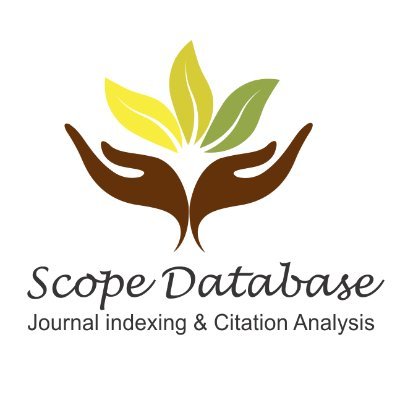Cognición social: del antropocentrismo a la cognición social comparada
DOI:
https://doi.org/10.32654/ConCienciaEPG/Eds.especial-8Palabras clave:
cognición social comparada, antropocentrismo, ecología comparada, socialización, complejidad social.Resumen
A pesar de ser una visión dominante, el programa antropocéntrico presenta errores en la manera en la que entiende la evolución de la cognición social, ya que su sistema de comparación tiene como base el ser humano. El programa ecológico, por otra parte, señala este error y propone que la base de la comparación debe ser ecológico-adaptativa, es decir, que la sofisticación de la cognición social, y por consecuencia del grado de complejidad social de las especies, surge de demandas ambientales que promueven la cooperación entre individuos y no de su cercanía filogenética con el humano. En el presente trabajo, realizamos una crítica de la perspectiva antropocéntrica dominante de la investigación en cognición social; asimismo, proponemos que este campo debe ampliarse y partir de la perspectiva ecológica del estudio del comportamiento y la cognición mostrando el vacío teórico y sintético que nos urge a realizar una síntesis de la cognición social comparada.
Descargas
Referencias
Adolphs, R. (2001). The neurobiology of social cognition. Current Opinion in Neurobiology, 11(2), 231–239. https://doi.org/10.1016/S0959-4388(00)00202-6
Adolphs, R. (2009). The social brain: neural basis of social knowledge. Annual review of psychology, 60, 693-716. https://doi.org/10.1146/annurev.psych.60.110707.163514
Adolphs, R., Damasio, H., Tranel, D., Cooper, G., & Damasio, A.R. (2000). A role for somatosensory cortices in the visual recognition of emotions as revealed by three-dimensional lesion mapping. Journal of Neuroscience, 20, 2683–2690. https://doi.org/10.1523/JNEUROSCI.20-07-02683.2000
Adolphs, R., & Spezio, M. (2009). Social cognition. In Berntson, G. G., & Cacioppo, J. T. (Eds.). Handbook of neuroscience for the behavioral sciences, (Vol. 2, 923–939). John Wiley & Sons Inc. https://doi.org/10.1002/9780470478509.neubb002047
Barkow, J.H., Cosmides, L., & Tooby, J. (Eds.). (1992). The adapted mind: Evolutionary psychology and the generation of culture. Oxford University Press.
Barrett, L., Henzi, P., & Rendall, D. (2007). Social brains, simple minds: Does social complexity really require cognitive complexity? Philosophical Transactions of the Royal Society B: Biological Sciences, 362(1480), 561–575. https://doi.org/10.1098/rstb.2006.1995
Barton, R. A., & Dunbar, R. I. (1997). Evolution of the social brain. En Whithen, A., & Byrne, R. W. (Eds). Machiavellian intelligence II: Extensions and evaluations (Vol. 2, 240). Cambridge University Press.
Beach, F. A. (1950). The snark was a boojum. American Psychologist, 5(4), 115. https://doi.org/10.1037/h0056510
Beran, M. J., Parrish, A. E., Perdue, B. M., & Washburn, D. A. (2014). Comparative cognition: Past, present, and future. International Journal of Comparative Psychology, 27(1), 3–30.
Bovenkerk, B., & Kaldewaij, F. (2014). The Use of Animal Models in Behavioural Neuroscience Research. En Lee, G., Illes, J., & Ohl, F. (Eds.). Ethical Issues in Behavioral Neuroscience (17-46). Springer Berlin Heidelberg.
Bshary, R., Gingins, S., & Vail, A.L. (2014). Social cognition in fishes. Trends in Cognitive Sciences, 18(9), 465-471. https://doi.org/10.1016/j.tics.2014.04.005
Bullock, T. H. (1993). How do brains work? Papers of a Comparative Neurophysiologist Springer. Birkhäuser. https://doi.org/10.1007/978-1-4684-9427-3
Butchvarov, P. (2015). Anthropocentrism in philosophy: Realism, antirealism, semirealism. De Gruyter. https://doi.org/10.1515/9781614518495
Byrne, R. W., & Bates, L. A. (2007). Sociality, evolution and cognition. Current biology, 17(16), R714-R723. https://doi.org/10.1016/j.cub.2007.05.069
Byrne, R.W., & Whiten, A. (Eds.). (1988). Machiavellian intelligence. Oxford University Press.
Cacioppo, J. T., Berntson, G. G., & Decety, J. (2012). A history of social neuroscience. In A. W. Kruglanski & W. Stroebe (Eds.), Handbook of the history of social psychology (123–136). Psychology Press.
Cacioppo, J.T., Visser, P.S., Pickett, C.L., & Litfin, K.T. (Eds.). (2006). Social neuroscience: People thinking about thinking people. MIT press.
Cahan, S., Carloni, E., Liebig, J., Pen, I., & Wimmer, B. (1999). “Causes and Consequences of Sociality”. Ethology Ecology & Evolution, 11(1), 85–87. https://doi.org/10.1080/08927014.1999.9522845
Chauchard, P. (1956). Sociétés animales, société humaine, coll.«Que sais-je?» Les Etudes Philosophiques, 11(4).
Chauvin, R. (1968). Animal societies. From the bee to the gorilla. Bookmarc’s.
Chittka, L., Rossiter, S.J., Skorupski, P., & Fernando, C. (2012). What is comparable in comparative cognition? Philosophical Transactions of the Royal Society, B, 367(1603), 2677-2685. https://doi.org/10.1098/rstb.2012.0215
Clarac, F., & Pearlstein, E. (2007). Invertebrate preparations and their contribution to neurobiology in the second half of the 20th century. Brain Research Reviews, 54(1), 113-161. https://doi.org/10.1016/j.brainresrev.2006.12.007
Darwin, C. (1859). On the Origin of Species by Means of Natural Selection, or the Preservation of Favoured Races in the Struggle for Life. John Murray.
Darwin, C. (1871). The descent of man and selection in relation to sex. John Murray.
Darwin, C. (1872). The expression of the emotions in man and animals. John Murray.
DeKay, W.T., & Shackelford, T.K. (2000). Toward an evolutionary approach to social cognition. Evolution and Cognition, 6, 185-195.
de Waal, F. (1982). Chimpanzee politics: Sex and power among apes. Harper & Row.
de Waal, F. B., & Ferrari, P. F. (2010). Towards a bottom-up perspective on animal and human cognition. Trends in Cognitive Sciences, 14(5), 201-207. https://doi.org/10.1016/j.tics.2010.03.003
Domanski, C. W. (2013). Mysterious “Monsieur Leborgne”: the mystery of the famous patient in the history of neuropsychology is explained. Journal of the History of the Neurosciences, 22(1), 47-52. https://doi.org/10.1080/0964704X.2012.667528
Dunbar, R. I. M. (1992). Neocortex size as a constraint on group size in primates. Journal of Human Evolution, 22, 469–493. https://doi.org/10.1016/0047-2484(92)90081-J
Dunbar, R. I. M. (1993). Coevolution of neocortex size, group size and language in humans. Behavioral and Brain Sciences, 16, 681–735. https://doi.org/10.1017/S0140525X00032325
Dunbar, R. I. M. (1998). The social brain hypothesis. Evolutionary Anthropology, 6, 178–190. https://doi.org/10.1002/(SICI)1520-6505(1998)6:5<178::AID-EVAN5>3.0.CO;2-8
Dunbar, R. I. M., & Bever, J. (1998). Neocortex size determines group size in insectivores and carnivores. Ethology 104, 695–708.http://doi.org/10.1111/j.1439-0310. 1998.tb00103.x
Dunbar, M. R. I., & Shultz, S. (2007). Evolution in the social brain. Science, 317(5843), 1344-1347. http://doi.org/10.1126/science.1145463
Ebstein, R., Shamay-Tsoory, S., & Chew, S.H. (Eds.). (2011). From DNA to social cognition. John Wiley & Sons.
Ellis, E.C. (2015). Ecology in an anthropogenic biosphere. Ecological Monographs, 85(3), 287-331. https://doi.org/10.1890/14-2274.1
Emery, N.J., & Clayton, N.S. (2009). Comparative social cognition. Annual Review of Psychology, 60, 87-113. https://doi.org/10.1146/annurev.psych.60.110707.163526
Farris, S. M., & Schulmeister, S. (2011). Parasitoidism, not sociality, is associated with the evolution of elaborate mushroom bodies in the brains of hymenopteran insects. Proceedings of the Royal Society B: Biological Sciences, 278(1707), 940-951. https://doi.org/10.1098/rspb.2010.2161
Festinger, L. (1962). Cognitive Dissonance. Scientific American, 207(4), 93–106. http://www.jstor.org/stable/24936719
Freiwald, W. A. (2020). Social interaction networks in the primate brain. Current Opinion in Neurobiology, 65, 49-58. https://doi.org/10.1016/j.conb.2020.08.012
Frith, C. D. (2007). The social brain? Philosophical Transactions of the Royal Society B: Biological Sciences, 362(1480), 671-678. https://doi.org/10.1098/rstb.2006.2003
Freeberg, T. M., Dunbar, R. I. M., & Ord, T. J. (2012). Social complexity as a proximate and ultimate factor in communicative complexity. Philosophical Transactions of the Royal Society B: Biological Sciences, 367(1597), 1785–1801. https://doi.org/10.1098/rstb.2011.0213
Gallese, V., Keysers, C., & Rizzolatti, G. (2004). A unifying view of the basis of social cognition. Trends in Cognitive Sciences, 8(9), 396–403. https://doi.org/10.1016/j.tics.2004.07.002
Gazzaniga, M. (1985). The social brain. Discovering the networks of mind. Basic Books
Grone, B. P., & Baraban, S. C. (2015). Animal models in epilepsy research: legacies and new directions. Nature Neuroscience, 18(3), 339-343. https://doi.org/10.1038/nn.3934
Haas, L. F. (2003). Hans berger (1873–1941), richard caton (1842–1926), and electroencephalography. Journal of Neurology, Neurosurgery & Psychiatry, 74(1), 9-9. http://dx.doi.org/10.1136/jnnp.74.1.9
Hamilton, W.D. (1964). The genetical evolution of social behaviour. I,II. Journal of Theoretical Biology, 7(1), 1-52. https://doi.org/10.1016/0022-5193(64)90039-6
Hamilton, A., Smith, N. R., & Haber, M. H. (2009). Social insects and the individuality thesis: cohesion and the colony as a selectable individual. In Gadau, J., & Fewell, J. (Eds.), Organization of insect societies: From genome to sociocomplexity (572-589). Harvard.
Happé, F., Cook, J. L., & Bird, G. (2017). The structure of social cognition: In (ter) dependence of sociocognitive processes. Annual Review of Psychology, 68, 243-267. https://doi.org/10.1146/annurev-psych-010416-044046
Heider, F., & Benesh-Weiner, M. E. (1988). Fritz Heider: 'The notebooks,'Vol. 4: Balance theory. Psychologie Verlags Union.
Hernández, I., Vecchi, D., Hernández, I., & Vecchi, D. (2019). Individuación colectiva y emergencia de la organismalidad. Revista de Humanidades de Valparaíso, 14, 335–362. https://doi.org/10.22370/rhv2019iss14pp335-362
Heyes, C., & Catmur, C. (2021). What happened to mirror neurons? Perspectives On Psychological Science. https://doi.org/10.1177/1745691621990638
Hinde, R. A. (1976). Interactions, relationships and social structure. Man, 1-17. https://doi.org/10.2307/2800384
Hobhouse, L. T. (1901). Mind in evolution. Macmillan.
Humphrey, N. (1976). The social function of intellect. En: Bateson, P.P.G. & Hinde, R.A. (Eds.) Growing points in ethology, (303–317). Cambridge University Press.
Jaegher, H., Di Paolo, E., & Gallagher, S. (2010). Can Social Interaction Constitute Social Cognition? Trends in Cognitive Sciences, 14, 441–447. https://doi.org/10.1016/j.tics.2010.06.009
Kappeler, P. M. (2019). A framework for studying social complexity. Behavioral Ecology and Sociobiology, 73(1), 13. https://doi.org/10.1007/s00265-018-2601-8
Katz, P. S. (2011). Neural mechanisms underlying the evolvability of behaviour. Philosophical Transactions of the Royal Society B: Biological Sciences, 366(1574), 2086-2099. https://doi.org/10.1098/rstb.2010.0336
Kopnina, H., Washington, H., Taylor, B., & Piccolo, J. J. (2018). Anthropocentrism: More than just a misunderstood problem. Journal of Agricultural and Environmental Ethics, 31(1), 109-127. https://doi.org/10.1007/s10806-018-9711-1
Korb, J., & Heinze, J. (2016). Major Hurdles for the Evolution of Sociality. Annual Review of Entomology, 61(1), 297–316. https://doi.org/10.1146/annurev-ento-010715-023711
Korkmaz, B. (2011). Theory of mind and neurodevelopmental disorders of childhood. Pediatric Research, 69(5 Pt 2), 101R-8R. https://doi.org/10.1203/PDR.0b013e318212c177
Kramer, R. M., Leonardelli, G. J., & Livingston, R. W. (2011). Social Cognition, Social Identity, and Intergroup Relations: A Festschrift in Honor of Marilynn B. Brewer. Psychology Press. https://doi.org/10.4324/9780203816790
Kruglanski, A.W., & Stroebe, W. (Eds.). (2012). Handbook of the history of social psychology. Psychology Press.
Krupenye, C., & Call, J. (2019). Theory of mind in animals: Current and future directions. Wiley Interdisciplinary Reviews: Cognitive Science, 10(6), e1503. https://doi.org/10.1002/wcs.1503
Kummer, H. (1978). On the value of social relationships to nonhuman primates: a heuristic scheme. Social Science Information, 17(4-5), 687-705.https://doi.org/10.1177/053901847801700418
Kunda, Z. (1999). Social Cognition: Making Sense of People. MIT Press
Lachmann, M., Blackstone, N. W., Haig, D., Kowald, A., Michod, R. E., Szathmary, E., Werren J. H., & Wolpert, L. (2003). Conflict in the evolution of genomes, cells, and multicellular organisms. En Hammerstein, P. Genetic and cultural evolution of cooperation, (327-356). MIT Press.
Lieberman, M. D. (2007). Social Cognitive Neuroscience: A Review of Core Processes. Annual Review of Psychology, 58(1), 259–289. https://doi.org/10.1146/annurev.psych.58.110405.085654
López-Riquelme, G.O. (2021). La causación de la sobrevivencia y la reproducción: el estudio integral de los mecanismos y la función del comportamiento. En Nieto-Gutiérrez, J. & Bernal-Gamboa, R. (Eds.). Estudios contemporáneos en cognición comparada 3. (9-116). Universidad Nacional Autónoma de México.
López-Riquelme, G.O. & Delgado-Villalobos, M. (2021). De las emociones sociales a las competencias socioemocionales: evolución, neurociencia cognitiva, desarrollo e intervención. En Montiel-Rojas, T.J. (Coordinadora). El desarrollo teórico-metodológico en el estudio de la cognición y el aprendizaje. (97-179). Universidad de Guadalajara.
Loukas, M., Pennell, C., Groat, C., Tubbs, R. S., & Cohen-Gadol, A. A. (2011). Korbinian Brodmann (1868–1918) and his contributions to mapping the cerebral cortex. Neurosurgery, 68(1), 6-11. https://doi.org/10.1227/NEU.0b013e3181fc5cac
Marder, E. (2002). Non-mammalian models for studying neural development and function. Nature, 417(6886), 318-321. https://doi.org/10.1038/417318a
Miller, G. A. (1990). Linguists, Psychologists, and the Cognitive Sciences. Language, 66(2), 317–322. https://doi.org/10.2307/414889
Mills, W. (1899). The nature of animal intelligence and the methods of investigating it. Psychological Review, 6, 262-274. https://doi.org/10.1037/h0074808
Mitchell, R. K., Busenitz, L., Lant, T., McDougall, P. P., Morse, E. A., & Smith, J. B. (2002). Toward a theory of entrepreneurial cognition: Rethinking the people side of entrepreneurship research. Entrepreneurship Theory and Practice, 27(2), 93-104. https://doi.org/10.1111/1540-8520.00001
Murdy, W. H. (1975). Anthropocentrism: A modern version. Science, 187(4182), 1168-1172. https://doi.org/10.1126/science.187.4182.1168
Murray, E. A., Wise, S. P., Graham, K. S., & Baldwin, M. K. (2019). The Evolutionary Road to Human Memory. Oxford University Press. https://doi.org/10.1093/oso/9780198828051.001.0001
Neisser, U. (1967). Cognitive psychology: Classic edition. Psychology Press.
Nestler, E. J., & Hyman, S. E. (2010). Animal models of neuropsychiatric disorders. Nature Neuroscience, 13(10), 1161-1169. https://doi.org/10.1038/nn.2647
North, M. S., & Fiske, S. T. (2012). A history of social cognition. En: Kruglanski A. W. & Stroebe W. (Eds.), Handbook of the history of social psychology (81–99). Psychology Press.
Pennington, D. C. (2000). Social Cognition. Routledge. https://doi.org/10.4324/9780203136089
Premack, D., & Woodruff, G. (1978). Does the chimpanzee have a theory of mind? Behavioral and Brain Sciences, 1(4), 515-526. https://doi.org/10.1017/S0140525X00076512
Raichle, M. E., MacLeod, A. M., Snyder, A. Z., Powers, W. J., Gusnard, D. A., & Shulman, G. L. (2001). A default mode of brain function. Proceedings of the National Academy of Sciences, 98(2), 676-682. https://doi.org/10.1073/pnas.98.2.676
Ratiu, P., Talos, I. F., Haker, S., Lieberman, D., & Everett, P. (2004). The tale of Phineas Gage, digitally remastered. Journal of Neurotrauma, 21(5), 637-643. https://doi.org/10.1089/089771504774129964
Romanes, G. J. (1882). Animal intelligence. Kegan Paul, Trench, & Trubner.
Romanes, G. J. (1883). Mental evolution in animals. Kegan Paul, Trench, Trubner & Co.
Semendeferi, K., Lu, A., Schenker, N., & Damásio, H. (2002). Humans and great apes share a large frontal cortex. Nature Neuroscience, 5(3), 272-276. https://doi.org/10.1038/nn814
Seyfarth, R. M., & Cheney, D. L. (2015). Social cognition. Animal Behaviour, 103, 191–202. https://doi.org/10.1016/j.anbehav.2015.01.030
Shettleworth, S. J. (1993). Where is the comparison in comparative cognition? Alternative research programs. Psychological Science, 4(3), 179-184. https://doi.org/10.1111/j.1467-9280.1993.tb00484.x
Shettleworth, S. J. (2009). The evolution of comparative cognition: is the snark still a boojum? Behavioural Processes, 80(3), 210-217. https://doi.org/10.1016/j.beproc.2008.09.001
Shettleworth, S. J. (2012). Modularity, comparative cognition and human uniqueness. Philosophical Transactions of the Royal Society B: Biological Sciences, 367(1603), 2794–2802. https://doi.org/10.1098/rstb.2012.0211
Shultz, S., & Dunbar, R. I. M. (2006). Both social and ecological factors predict ungulate brain size. Proceedings of the Royal Society B: Biological Sciences, 273(1583), 207-215. https://doi.org/10.1098/rspb.2005.3283
Sire, M. (1960). La vie sociale des animaux. Éditions du Seuil.
Smith, P. K. (1990). Ethology, sociobiology and developmental psychology: In memory of Niko Tinbergen and Konrad Lorenz. British Journal of Developmental Psychology, 8(2), 187-200. https://doi.org/10.1111/j.2044-835X.1990.tb00833.x
Sweetlove, L. (2011) Number of species on Earth tagged at 8.7 million. Nature. https://doi.org/10.1038/news.2011.498
Thorndike, E. L. (1898). Animal intelligence: An experimental study of the associative processes of animals. Psychological Monographs, 2, 1-109. https://doi.org/10.1037/h0092987
Thorndike, E. L. (1911). Animal intelligence. MacMillan.
Tinbergen, N. (1964). Social behaviour in animals. With special reference to vertebrates. Chapman and Hall.
Tomasello, M. (2014). The ultra-social animal. European Journal of Social Psychology, 44(3), 187–194. https://doi.org/10.1002/ejsp.2015
Trivers, R. L. (1971). The evolution of reciprocal altruism. The Quarterly Review of Biology, 46(1), 35-57. https://www.jstor.org/stable/2822435
Varela, S. A. M., Teles, M. C., & Oliveira, R. F. (2020). The correlated evolution of social competence and social cognition. Functional Ecology, 34(2), 332–343. https://doi.org/10.1111/1365-2435.13416
Vilarroya, O., & i Argimon, F. F. (Eds.). (2007). Social Brain Matters: Stances on the Neurobiology of Social Cognition (Vol. 190). Rodopi.
Washburn, M. F. (1908). The animal mind: A text-book of comparative psychology. MacMillan Co.
Wheeler, W. M. (1928). The social insects: their origin and evolution. K. Paul, Trench, Trubner Co.
Wilson, E. O. (1975). Sociobiology. The new synthesis. Harvard University Press.
Wilson, E. O. (1978). On human nature. Harvard University Press.
Wilson, E. O. (2000). Sociobiology: The New Synthesis, Twenty-Fifth Anniversary Edition. Harvard University Press.
Wynne-Edwards, V.C. (1962). Animal dispersion in relation to social behaviour. Hafner Publishing Company.
Descargas
Publicado
Número
Sección
Licencia
Derechos de autor 2022 Revista ConCiencia

Esta obra está bajo una licencia internacional Creative Commons Atribución 4.0.
Cómo citar
PLUMX Metrcis

































